PPA Lineup Set
One of the best educational events of the year (in my humble opinion) is now set and again is offering a terrific lineup of speakers. But you should also know that the registration deadline is quickly approaching for the 2021 Perennial Plant Association (PPA) Virtual National Symposium in July.
For the first time ever, PPA will present a Hybrid National Symposium showcasing world-renowned speakers on an online platform at a Virtual National Symposium, pairing this with six smaller, outdoor regional in-person PPA Pop-up events held at various locations around the U.S. This reminds me of a tailgate party… get out the cornhole!

“Excitement is brewing with the upcoming PPA Virtual National Symposium," said Christa Steenwyk, President of the Perennial Plant Association. “After a long year, we are overjoyed to finally bring our PPA family together again in a safe environment and cannot wait to see everyone’s faces at the Virtual National Symposium.”
The PPA Virtual National Symposium will be held from July 27 to July 29 and will draw inspiration from the theme "Celebrating Perennials: People, Place & Purpose" as speakers join from places such as Italy, Britain, Brooklyn, Denver and beyond. A few of the topics being presented include the latest on trial reports, the native conundrum of supply and demand, foliage and texture, what biodiversity really means, and inspiration from public and private gardens.
“I wholeheartedly feel our attendees at the Virtual National Symposium will be inspired and gain invaluable knowledge from the world-class lineup of speakers and session topics," said Richard Hawke, Central Regional Director of the Perennial Plant Association. “This is an opportunity not to be missed.”
I completely agree so head over to the PPA Virtual National Symposium page to see the speaker list and register.

Seido Fungicide
These days, any new chemistry labeled for ornamentals is to be celebrated and OHP, Inc. seems to have hit a homer with the introduction of Seido Fungicide, a new and revolutionary tool for prevention and early curative control of powdery mildew infections.
In my opinion, a key positive for Seido centers on its translaminar (can pass through the leaf from upper to lower leaf surface) plus vapor activity. This gives Seido an advantage of protecting both sides of the leaf while the vapor activity enhances spray coverage to all surfaces of the plant as well as neighboring plants.
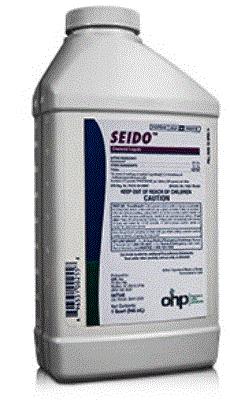
Another positive is that Seido (active ingredient pyriofenone) stands alone as the only chemistry available in ornamentals in the FRAC Group 50, notes Dr. Carlos Bográn, OHP Senior Technical Manager, meaning there's no known resistance.
"OHP feels Seido will become a vital part of ornamental growers’ powdery mildew control programs in short order," says Dr. Bográn. "With a 4-hour REI, unique mode of action and rainfastness within 30 minutes, Seido can easily integrate into any powdery mildew control program."
I agree—this combination of traits is legit (as my students would say).
As a standout powdery mildew solution, Seido is compatible with other plant protection solutions, including conventional and biological products. Users may tank mix with other OHP fungicides such as Astun®, OHP 6672®, OHP Chipco 26019®, Terraguard® and Triathlon® BA for broader activity. Users should check with their state regulatory departments for Seido registration status before applying.

Armitage’s Garden Perennials is Back in Print!
It's been seven years since horticulture icon Dr. Allan Armitage’s popular book "Armitage’s Garden Perennials, Second Edition" went out of print. Seriously—I had to double check that one because I cannot be that old (alas, the math never lies, dangit). In that time, gardeners and professionals alike have been asking if it'll be reprinted. It is with pride and delight that Dr. Armitage announced the book has been revived and is now available.
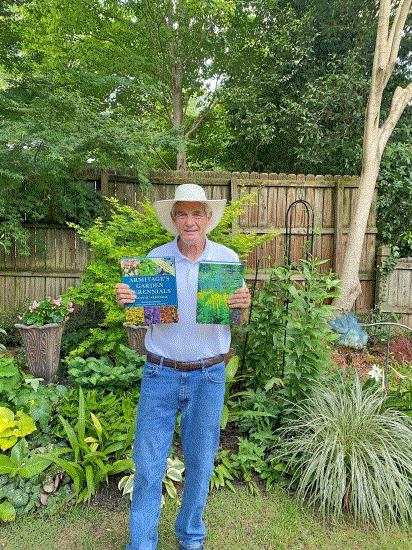
Published by Echo Point Books & Media, the newest edition of "Armitage’s Garden Perennials" is a must-have reference for both new and experienced gardeners, allowing readers to discover the beauty and joy perennial plants provide.
Thousands of people turned to gardening as they stayed home during the coronavirus pandemic and the global gardening boom shows no signs of slowing down. Writing about hundreds of his favorite perennials, Dr. Armitage distills the perennial plant world down to his favorite and most useful perennials, in a friendly, often humorous way. However, it's the 1,300 beautiful photos that every gardener appreciates. Dr. Armitage finds the joy in working in the dirt and says without hesitation, “This is gardening, not brain surgery. It is supposed to be fun.”
Heck, yeah, Doc! Keep up that positive attitude and we love the dad-level humor!

Pineapple Lily
This time of year, one of my favorite perennials is in its prime, and with such a unique texture and form, it’s a must-have in gardens south of Zone 8. But have no fear—north of Zone 8 it can be dug and overwintered fairly easy or treated as an annual.
Pineapple lily got its name because the flower spikes (which come in white, pink and violet, depending on cultivar/species) on this South African native actually do look like a pineapple. Bold, strap leaves are a great contrast in a planting, especially if the leaves are a burgundy variety, like the cultivar Sparkling Burgundy. Another plus is that this plant is deer-tolerant (some may say resistant, but I don’t think deer resistant exists).
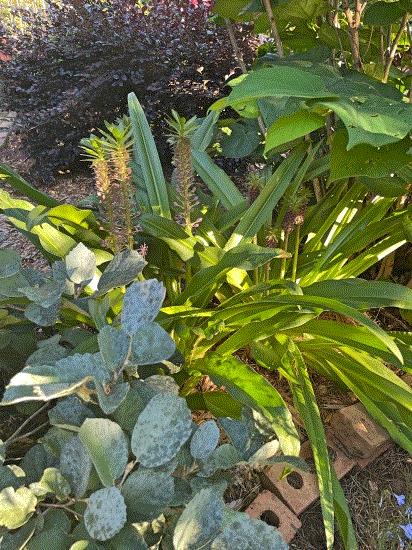
I’ve always liked pineapple lily when it’s clustered into a mass planting (see photo) or planted into a container as a “thriller” plant. I’ve also enjoyed the fact that it’s pretty versatile in the landscape, tolerating some shade, fairly poor soils (as long as it’s not a super dry site) and competition from neighboring perennials in a mixed border.
So give it a shot if you’re down south.

The New RedBooks are here!
Speaking of books, the Ball Publishing team proudly announced the arrival the new 19th Edition of the Ball RedBook!
Released in early June, the new 19th Edition of the Ball RedBook remains the horticulture industry’s oldest continuously published reference book. George J. Ball, the founder of the company that bears his name, published the first RedBook in 1932, and each edition since has grown in size and scope. In the latest two-volume set, editors worked with 96 industry experts in academia, breeding, crop production and equipment manufacturing, each of whom lent their many years of experience to the project.
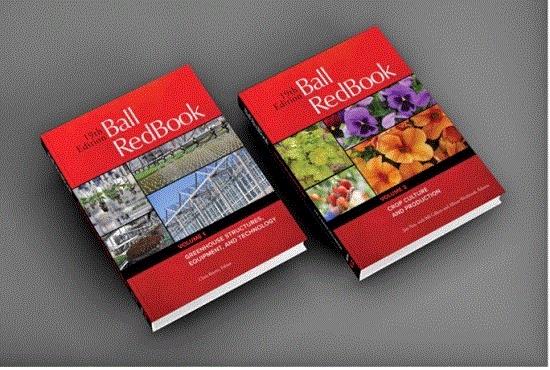 The 19th Edition of the Ball RedBook is a must-have for greenhouse professionals (and students) in all areas of horticulture. "Volume 1: Greenhouse Structures, Equipment, and Technology" includes the most detailed, current technology and crop production information available, adding robotics, controlled-environment agriculture, LED lighting, cannabis greenhouses and artificial intelligence to the already vast collection of topics.
The 19th Edition of the Ball RedBook is a must-have for greenhouse professionals (and students) in all areas of horticulture. "Volume 1: Greenhouse Structures, Equipment, and Technology" includes the most detailed, current technology and crop production information available, adding robotics, controlled-environment agriculture, LED lighting, cannabis greenhouses and artificial intelligence to the already vast collection of topics.
"Volume 2: Crop Culture and Production" has expanded to include more than 200 crops, as well as all of the factors of plant growth needed to understand the technical and cultural aspect of plant production. Some of what’s new includes new hybrid geraniums and begonias, Sunfinity-type helianthus and an expanded section on SunPatiens. There’s also a detailed, all-inclusive section on hemp/cannabis.
The 19th Edition of the Ball RedBook is available now and can be ordered individually or as a two-volume set through IPG Books at www.ballredbook.com. For customers who cannot order online, they can call or write IPG and ask for the Ball Culture Guide or Ball RedBook Vol. 1 and/or Vol. 2. to: Independent Publishers Group, 814 N. Franklin Street, Chicago, IL 60610 [Tel: (800) 888-4741].

Red, White & Bloom!
As the “spring” season is winding down even in the great north, are you looking for a little marketing to push the season another week? Well, the National Initiative for Consumer Horticulture (NICH) is at it again, providing another reason to promote what we do to the consumer. They’ve devised a creative way to engage gardeners in an interactive celebration of the annuals, perennials and flowering shrubs in their backyards.
It’s called American Flowers Week (June 28-July 4), and based on a free and inclusive social media campaign that highlights U.S.-grown cut flowers. Launched in 2015, the home-grown campaign is part of Slow Flowers Society’s advocacy, education and outreach efforts.
American Flowers Week invites all flower lovers (gardeners, florists and growers) to celebrate beauty, sustainability and joy of local and seasonal flowers across the U.S. In addition to providing free resources and graphics, Slow Flowers commissions teams of flower farmers and floral designers to create wearable botanical couture garments each year. The dazzling floral fashions are worn by live models and photographed for publication. Each look is a reflection of an iconic U.S.-grown cut flower, while also showcasing the farming and design talents of our members.
NICH and Slow Flowers encourage everyone to post photos of their red, white and blue botanicals across social media and use #americanflowersweek as the tag. Participation in American Flowers Week has generated more than 15 million impressions across social media platforms since its launch.
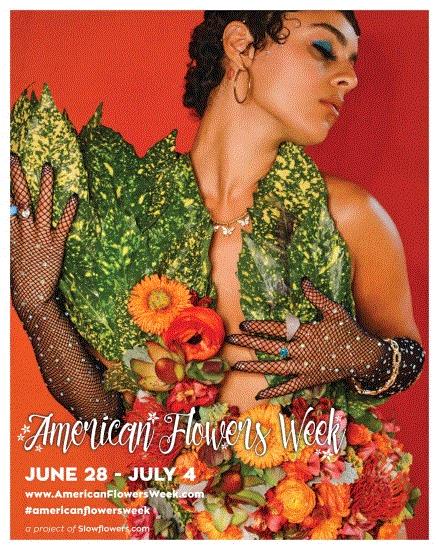
The print materials developed as part of this effort are outstanding, including what I call the "Aucuba Lady."
The audience for American Flowers Week includes home gardeners, media, floral professionals and consumers who enjoy flowering plants in backyards, fields and farms across the U.S.
With more than 16 million new Americans taking up gardening in the past year, American Flowers Week provides professionals and organizations in consumer horticulture a fun opportunity to invite everyone to join in the flower Independence Day promotion. Learn more at americanflowersweek.com.

Common Snowberry
Time to show some love to a North American native species, common snowberry (Symphoricarpos albus). And when I say northern, I mean way up to Zone 3 in Canada and down to Zone 7. I’ve tried this in Zone 8 (Athens, Georgia) in a number of locations having varying soil types and aspects with no success, which has been a bit depressing since this is one I fell in love with while living in southern Sweden, where you can occasionally find it as an ornamental landscape plant. (P.S. some say it’s edible, and while I've tried it, my verdict is “meh—bland.”)
One of the tricks to growing snowberry is having a well-drained soil (it hates clay soils) and low(ish) fertility. It’s a bushy, rounded, deciduous shrub that typically grows to 3- to 6-ft. tall and wide. It's native to dry rocky wooded slopes, banks and forests from Nova Scotia to British Columbia south to Oregon, New Mexico, Illinois and Virginia. With that range, I’ve always wondered why breeders haven’t looked to improve it and release some cultivars. And some may have tried, but with little success thus far.
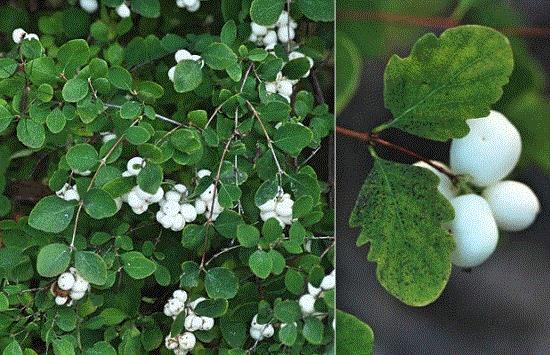
Photos courtesy of Pat Breen, Oregon State University Cooperative Extension.
Tiny, bell-shaped, pink flowers (to quarter-inch long) bloom in clusters in the leaf axils in early summer (June-July). Flowers are followed by clusters of pretty big (half-inch) berries that are initially light green, but ripen to pure white by late summer to early autumn. Fruits remain attractive on the naked winter stems in large part because most birds don't find them appetizing.

Our Wacky Wonderful World—Notes from the Edge of Sanity
Have you heard of “the great resignation”? If not, I suggest doing a Google deep dive or check out any news piece on the topic, such as this NY Times article from last week.
The great resignation, as it’s been coined, is a phenomena that’s gaining steam across the developed world whereby workers are re-examining their life post-pandemic. And since work is a huge part of our life, workers are leaving jobs at a rate much higher than normal.
Now a large part of this is the estimated backlog of folks (about 5 million) that would have switched jobs during the pandemic, but didn’t because of that pesky issue of quarantine. But that’s only part of the story.
I can speak from personal experience that the pandemic also made many people reassess their position, and quite frankly, their life. Many people looked to get closer to family, as I've done. Others simply looked for higher pay or lower cost-of-living situations (I check those boxes, too). Regardless of why, many social scientists estimate 30% to 40% of the American workforce will (or already have) change employment in calendar in the 18-month window from January 2021-July 2022.
Now, I've heard many folks say, “This won’t affect agriculture (including the Green Industry).” Well, I say not so fast. One of the benefits of being a professor is that when former students start looking for new jobs, they call me to see if I'll act as a reference. I can testify that in the last six months, I've written 2.5 times the reference letters (or had phone chats with employers) as I did in the six-month window between January-July 2019.
So what does this mean for your business? I think it’s simple—this should be a time to focus on two concurrent strategies. First, start recruiting, even if you’re not looking for anyone. This will position you to fill spots quickly if they should open.
Second, start seriously considering and budgeting for retention of workers you can’t afford to lose. In some cases, when an employee moves for family issues, retention just isn’t possible. But in most cases, it comes down to money and benefits, so constructing a strategy now that’s within your budgetary means should be high on the priority list.
And if you’ve had a mass exodus of employees, let me know. I’m very interested in seeing if this has any regional trends associated with it.

Live authentic,

Matthew Chappell
Editor-at-Large
Nursery & Landscape Insider
This has been received by 31,378 of the hardest-working horticulturists in show business!
If you're interested in reaching 31,378 clients who eagerly await every Nursery & Landscape Insider and surely read every word, contact Kim Brown ASAP and she'll hook you up.